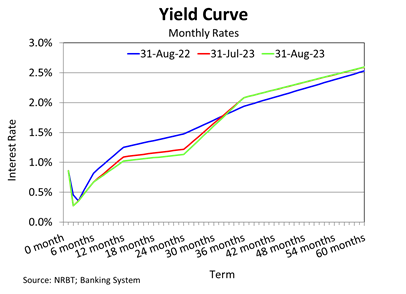Spending on imported food items drove inflation
- Details
- Category: Economic Releases
- Created: 23 May 2017
| Inflation December 2016 | ||||
| Dec 16 |
Nov 16 |
Oct 16 |
Sep 16 |
|
| Headline * | 6.7 | 6.8 | 6.1 | 7.0 |
| Domestic ^ | 2.7 | 3.4 | 2.9 | 4.3 |
| Imported ^ | 4.0 | 3.4 | 3.2 | 2.8 |
| * Year-ended growth | ||||
| ^ Percentage point contribution to year-ended growth | ||||
The annual headline inflation rate for December rose by 6.7%, higher than the Reserve Bank’s expected headline inflation of 6.4%. This stemmed from inflation rates being at very low levels last year, whereas December 2015 recorded an annual headline deflation of 1.2%. Over the year to December 2016, the prices of imported meat and kava-Tonga remained the highest contibutors to the annual rise in headline inflation rate with 2.4 and 1.2 percentage points respectively. Inflation also rose by 0.3% over the month of December 2016, driven by the changes in prices of domestic kava-Tonga and electricity. In addition, the increase in the prices of imported paint, concrete, fuel, cosmetics & toiletries, and food also contributed to this increase.
The annual imported inflation increased by 6.9%, contributing 4.0 percentage points to the annual headline inflation in the year ended December 2016. This was mainly due to a 10.6% increase in imported food prices depicted by the rise in prices of mutton flaps, chicken pieces, and sugar. Additionally, the price of tobacco rose by 16.6% similar to the annual percentage rise recorded in November 2016. These continued to reflect the impact of the amended custom duties and excise taxes introduced in July 2016 and the rising global food prices. Moreover, the costs of fuel and clothing supplies and services rose over the year by 6.4% and 8.2% respectively. Petrol and diesel prices both rose by 7.0% over the year reflecting the increased price of global oil prices. Similarly, imported prices also increased over the month by 0.3% due to a 1.7% increase in the price of vegetables and 1.3% rise in fuel prices.
The domestic annual inflation rate rose by 6.4% in December 2016. The trend of most items in the CPI basket was similar to the previous month. The price of kava-Tonga remained the highest contributor with 167.8% rise over the year due to its continued short supply. Domestic food prices rose by 0.3% over the year compared to a 5.8% increase in the previous month. This reflects abundant supply of food in the domestic market forcing its prices to fall over the month by 0.9% and remained low over the year. Household operations rose by 3.0% over the year, due to increases in the prices of household furniture, household supplies & services, and communications services which outweighed the decrease in the electricity prices.
On the outlook, kava prices are likely to impact the domestic inflation for some time due to a shortage of supply and increase demand, therefore contribute to the annual headline inflation. With world oil and food prices slowly on the rise, in conjunction with the added new custom duties, this will impact imported inflation. Additionally, spending in the beginning of the year for church festivities and preparation for the academic year are likely to drive up domestic consumption thus drive the headline inflation higher. The Reserve Bank anticipates the annual headline inflation rate to fall below the inflation reference rate of 5% per annum in 2017/18. However, movements in commodity and oil prices, and other temporary factors may pose a risk to this forecast.
Download the full report: Inflation Rate - December 2016

